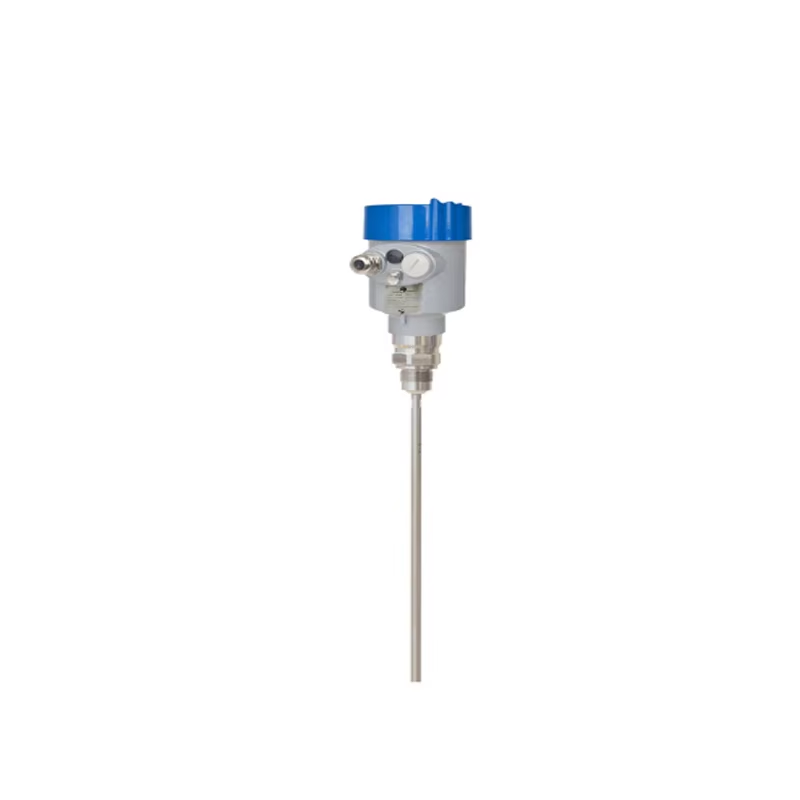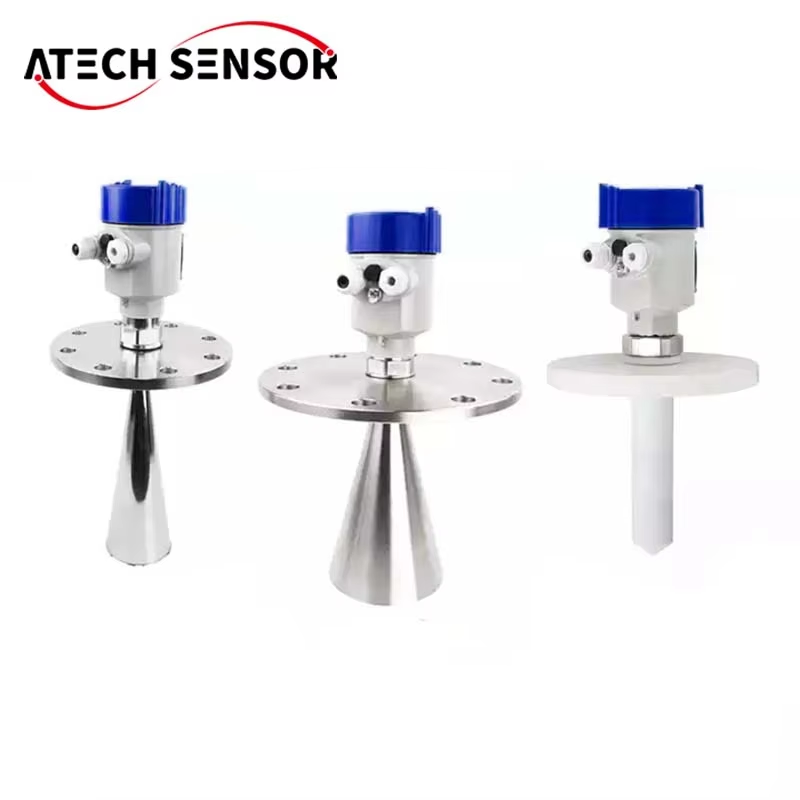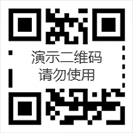Guided wave radar level transmitter, a kind of liquid level measurement instrument in chemical industry.Guided wave radar level transmitter is based on the principle of time domain reflection (TDR) as the basis of the radar level transmitter, the electromagnetic pulse of the radar level transmitter propagates along the steel cable or probe at the speed of light, when it meets the surface of the measured medium, part of the pulse of the radar level transmitter is reflected to form a return wave and return to the pulse transmitting device along the same path, and the distance between the transmitting device and the surface of the measured medium is proportional to the time of propagation of the pulse in the interval, and the liquid level is calculated.The distance between the transmitter and the surface of the measured medium is proportional to the propagation time of the pulse in between, and the liquid level height is calculated.

Technical advantages of guided wave radar level transmitter:
Radar level transmitter for liquid, particle and slurry continuous level measurement.Guided wave radar level transmitter measurement is not affected by media changes, temperature changes, inert gases and vapors, dust, foam and so on.The radar level transmitter has an accuracy of 5mm, a range of 60 meters, and is resistant to high temperature of 250 degrees and high pressure of 40 kilograms, and the radar level transmitter is suitable for explosive hazardous areas.
Uses: Guided wave radar level transmitter is applied to water liquid storage tanks, acid and alkali storage tanks, slurry storage tanks, solid particles, small oil storage tanks.All kinds of conductive, non-conductive media, corrosive media.Such as coal silos, ash silos, oil tanks, acid tanks and so on.
Precautions for use
Guided wave radar level transmitter for the installation of space has certain requirements. Note the dielectric constant of the medium, and according to the size of the dielectric constant to select the appropriate model.

The characteristics of guided wave radar level transmitter
1.can measure any medium with dielectric constant greater than or equal to 1.4.
2. Generally used to measure the viscosity ≤ 500cst and not easy to produce adhesion of the medium.
3. Rod radar zui large range can reach 6 meters.
4. Strong inhibition of vapor and foam, measurement is not affected.
5. For liquid materials with relatively small dielectric constant can be measured by double probe type to guarantee good and accurate measurement precision.
Measuring range description editor
1. Top blind zone is the the small distance between the zui high material surface and the measuring reference point.
2. Bottom blind zone is the distance near the bottom of the cable that cannot be measured accurately.
3. The distance between the top blind spot and the bottom blind spot is the valid measurement distance.
Note: The guided wave radar level transmitter can only guarantee reliable measurement of the level in the tank if the material is between the top and bottom blind zones.

Guided wave radar level meter technical parameters
Product: SCLD-A cable-type guided wave radar level transmitter
Application: for a large number of ranges.Can measure solid and liquid media.Applicable to complex measurement, liquid and solid granular media, large dust environment
Measuring range: 25 meters
Process connection: threaded (G1-1/2 ″, 1-1/2 ″ NPT), flange (DN50/80/100/150) Medium temperature: -40 ~ 230 ° C, higher than 230 ° C high-temperature heat sinks customized
Process pressure: -0.1 ~ 4.0Mpa, high-pressure can be customized
Signal Output: 4~20mA
Sampling: echo sampling 55 times/sec.
SCLD-B rod-type guided wave radar level transmitter
Application: for solid and liquid media measurement, powdery particles media.
Measuring range: 6 meters
Process connection: threaded (G1-1/2″, 1-1/2″ NPT), flange (DN50/80/100/150) Medium temperature: -40 ~ 230 ° C, higher than 230 ° C high temperature plus heat sinks
SCLD-C double rod radar
Application: solid, liquid measurement, can be used for liquids with relatively small dielectric constant.
Measuring range: 6 meters
Process connection: threaded (G1-1/2″, 1-1/2″ NPT), flange (DN50/80/100/150) Medium temperature: -40-230 ° C, higher than 230 ° C high-temperature plus heatsinks to order
Process Pressure: -0.1 ~ 40Mpa, high-pressure can be customized
Accuracy: 0.2% ± 1mm
Signal Output: 4 ~ 20mA
Guided wave radar level transmitter installation
1. Avoid the feed opening to avoid false reflections.
2. The sensor should not be installed in the center of the arch tank (otherwise the false echo received by the sensor will be enhanced), and should not be installed very close to the tank wall, the best installation position in the vessel radius of 1/2.
Proper installation ensures reliable and accurate measurements over time.
Guided wave radar level transmitter can be threaded, the length of the thread should not be more than 150mm, can also be used in the short pipe installation.Ideal short pipe diameter is less than 150mm, height is less than 150mm, if installed on a longer short pipe, should be fixed at the bottom of the cable or the choice of centering bracket to avoid contact between the cable and the end of the short pipe.
DN200 or DN250 installed in a short pipe
When the instrument needs to be installed in a short pipe with a diameter of more than 200mm, the inner wall of the short pipe generates an echo, which will cause measurement errors in the case of low dielectric constant of the medium.Therefore, a special flange with a "flare connection" is required for a short pipe with a diameter of 200 mm or 250 mm. Try to avoid installation on short pipes with a diameter of more than 250 mm.
Precautions for installation on plastic tanks
Guided wave radar level transmitter, whether cable or rod type, if you want the instrument to work properly, the process of connecting the surface should be metal.When the instrument is mounted on a plastic tank, if the top of the tank is also plastic or other non-conductive materials, the instrument needs to be equipped with a metal flange, if the threaded connection, need to be equipped with a metal plate.

